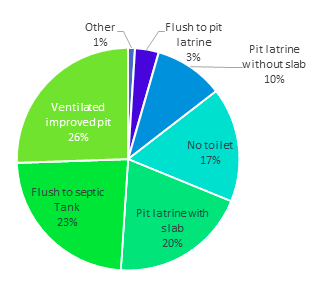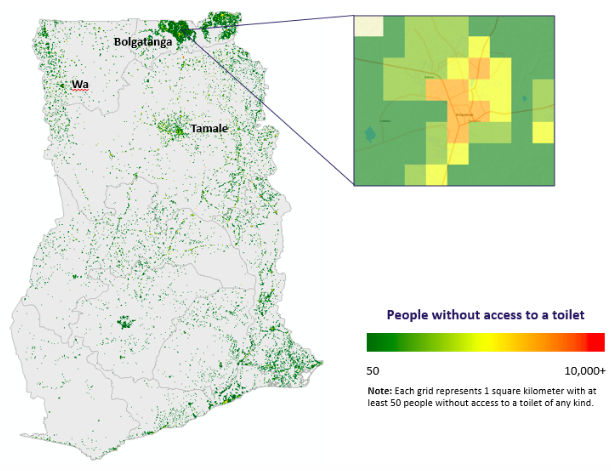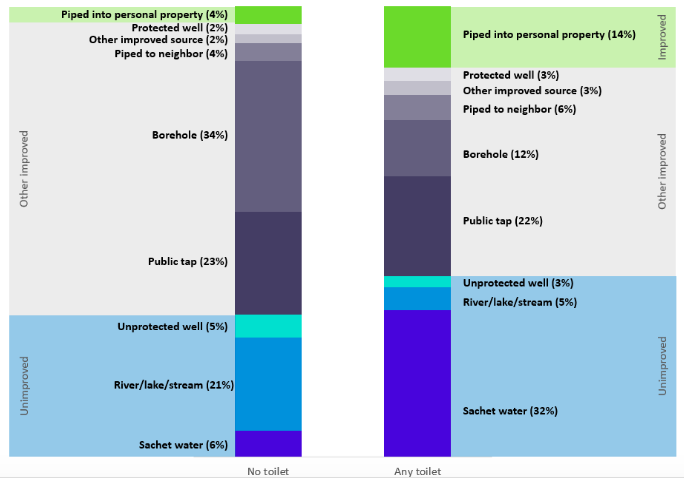Build Effective Social and Behavior Change Strategies


In observation of World Toilet Day, Fraym explored challenges to quality sanitation in Ghana, one of the lowest scoring countries in the University of Carolina’s 2015 Water and Sanitation for Health (WASH) Performance Index. To maximize the impact of the resources available, it is crucial to target private and public sector interventions to communities with the greatest need. Below is our analysis of conditions on the ground in Ghana.
National Situation
Nationally, Fraym found that about 84% of Ghanaians have access to toilets of any kind, but only one-third have access to flush toilets. The most popular flush toilets rely on septic tanks, while other common toilet options include ventilated improved pits and pit latrines with slabs. Flush toilets of any kind are considered to be the optimal facilities. All other non-flush toilets are referred to as ‘some finished’.

Figure 1- Access to toilet in Ghana, by facility type1
Locating underserved communities
Fraym used machine learning algorithms to identify the highest concentrations of people without access to toilets of any kind. There is a deep divide between southwestern Ghana and the rest of the country in terms of access. The Upper East, Northern, and Upper West regions lag the furthest behind, where about half or less of the population has access to toilets. Although larger cities like Tamale, Bolgatanga, and Wa have large concentrations of underserved communities, the map of toilet access below shows that there is significant need in rural areas, where about 27 percent of the population has no toilet access.

Understanding communities without toilet access
Families with access to any kind of toilet are wealthier, more digitally connected, and haver greater access to utilities than other households without. Some statistics that highlight these disparities include:
– Households with toilets are seven times more likely to use advanced cooking fuel and twice as likely to own a television
– Almost all households with toilet access are connected to the electric grid, compared to 63 percent of other households
One of the key findings is that nearly half of the people with access to toilets also have access to safe drinking water (from sachets or piped into the home), compared to only 10 percent of Ghanaians without toilet access. Instead, undeserved households are more likely to get their drinking water from riskier drinking sources like boreholes, public taps, or at worst rivers and unprotected wells. Given the complexity of the issue, Fraym can work with development organizations and private utility providers to precisely target the communities most in need of improved access to sanitation.
